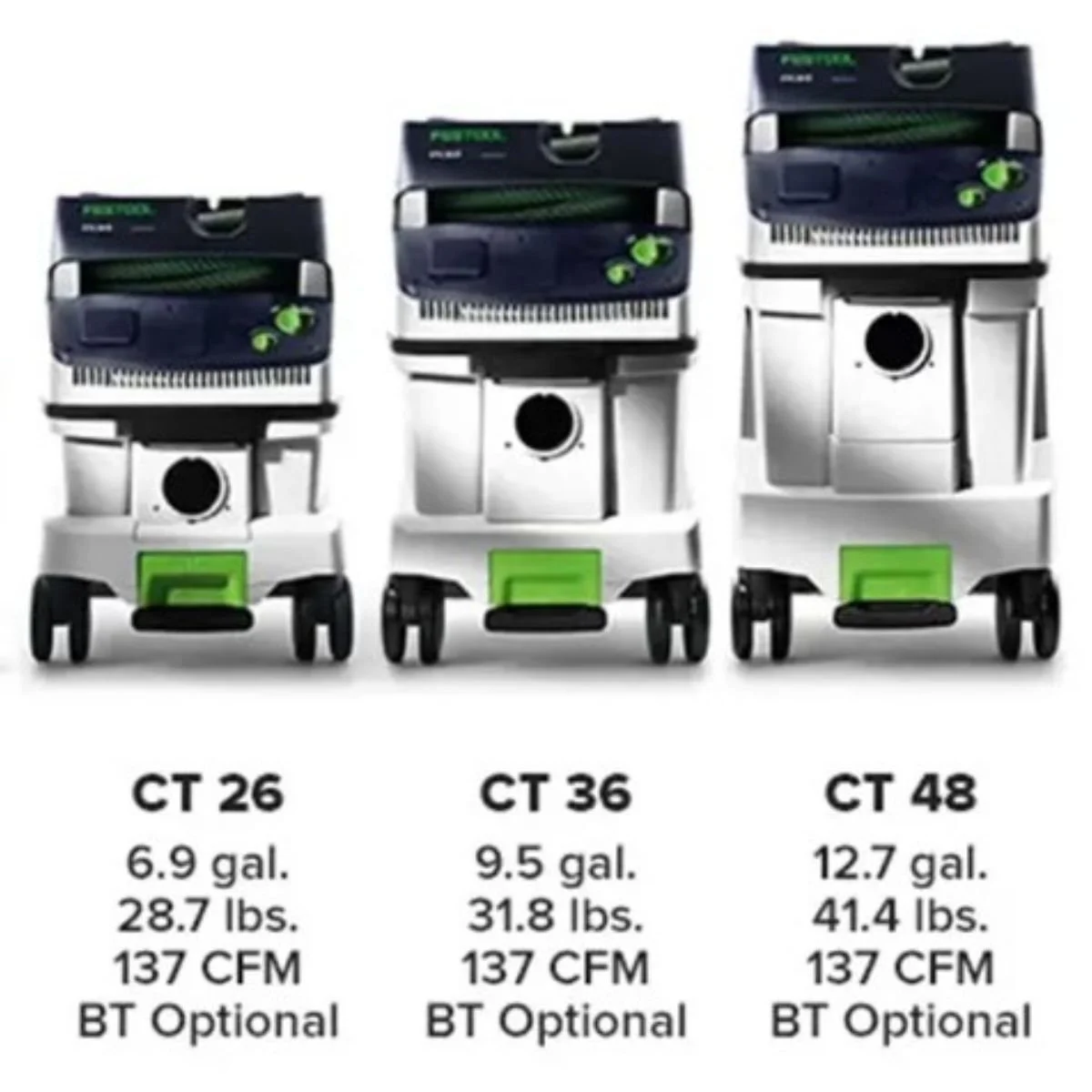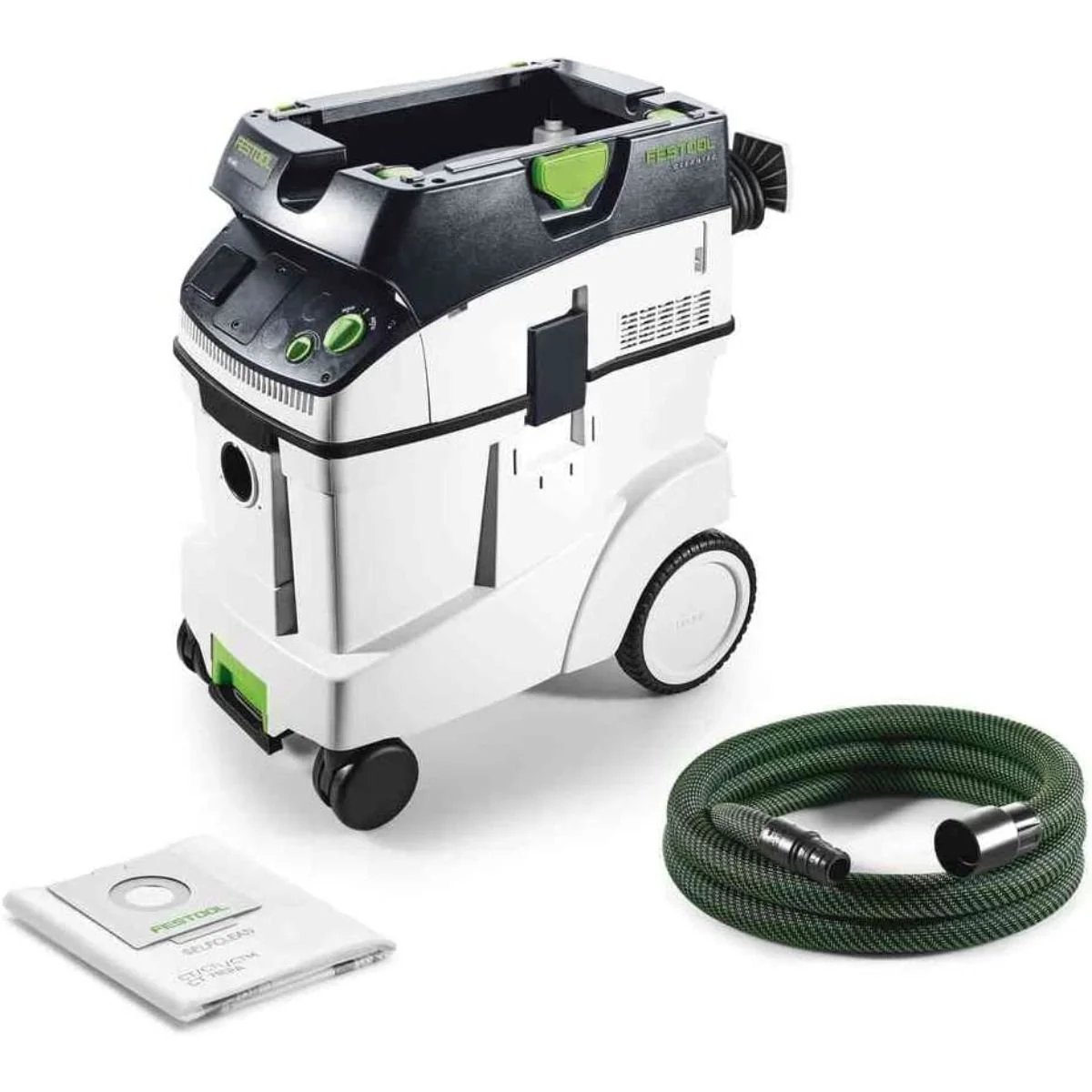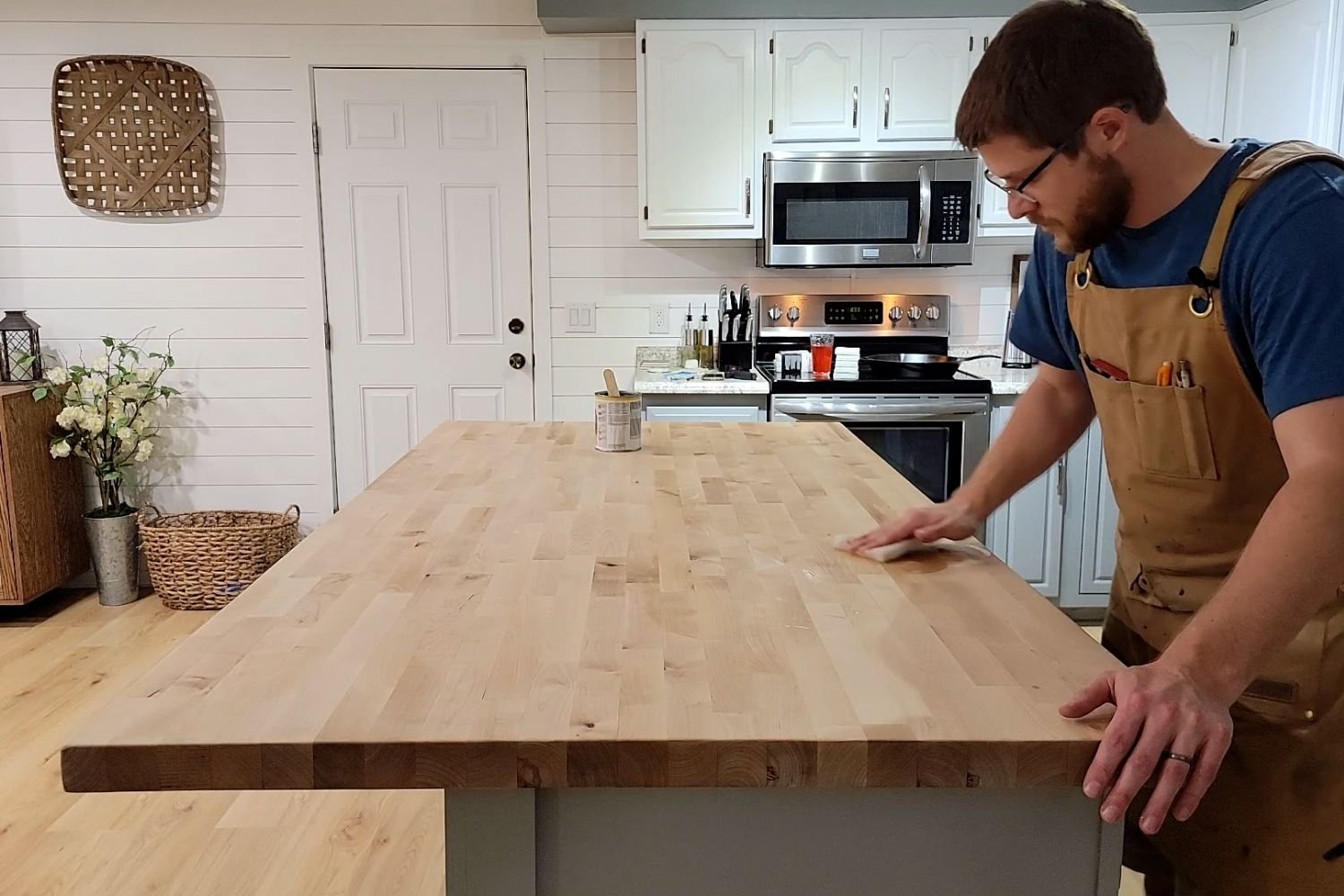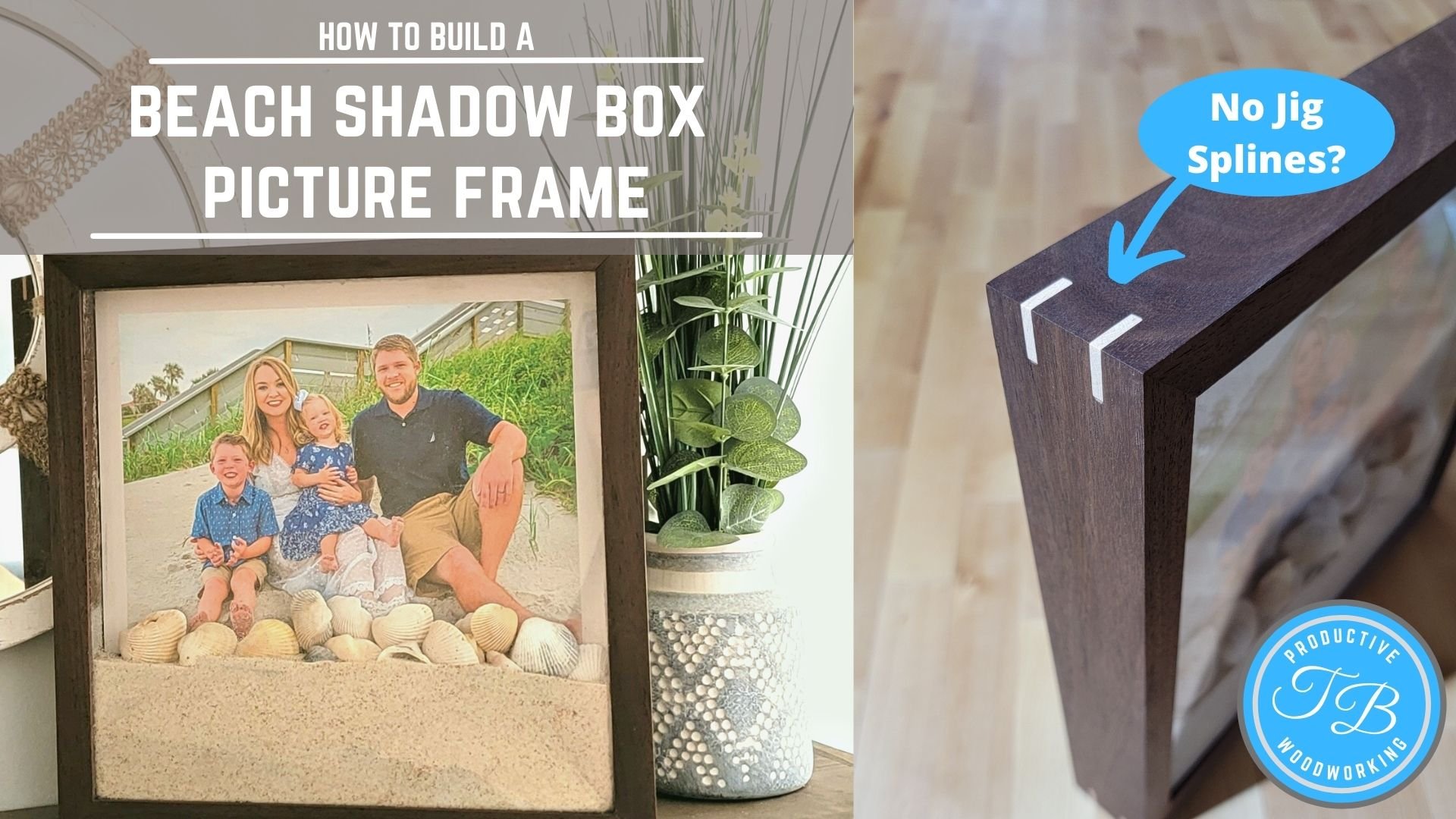Festool CT HEPA Dust Extractor Review
Personal Experience
I have used my Festool CT 36 dust extractor for over 3 years now and it has been a great addition to my home workshop. I was tired of being covered in sawdust and having it all over my garage, so I eventually made the leap into Festool. Using a dust extractor with a HEPA filter has completely changed my experience in the shop, especially with sanding. The difference between a standard shop vac or dust collector and a Festool dust extractor is extremely different. When using my CT 36 and a random orbital sander I experience zero dust in the air, on my workpiece, and even on my workbench. This review is based on my personal experience with the Festool CT 36 dust extractor but applies to the entire CT model lineup since they all share the same great features and only differ in size. If you want to compare the various models Festool offers I also have a full comparison available.
We’re reader-supported. Affiliate links are used on this page. See my disclosure page for info on affiliate programs. The links do not cost anything extra to you! I receive a small percentage from the businesses you purchase from which help support creating content and reviews like this one!
Pros
HEPA Filtration
Excellent Suction Power
High Quality
Cons
Expensive
Heavy
High-Cost Attachments
Specifications
The following specifications are standard on all the Festool CT model dust extractors including the CT 26, CT 36, and CT 48. The only differences between the models are the maximum volume of sawdust they can hold as well as the size and weight.
| CT 26 | CT 36 / CT 36 AC | CT 48 / CT 48 AC | |
|---|---|---|---|
| Weight | 30.64 lbs (15.32 kg) | 31.75 lbs (14.4 kg) | 35.71 lbs (16.2 kg) |
| Power cable | 25 ft (7.5 m) | 25 ft (7.5 m) | 25 ft (7.5 m) |
| Dimensions (L x W x H) | 25" x 14" x 22" (630 x 365 x 540 mm) | 25" (630 mm) x 14.4" (365 mm) x 23.4" (596 mm) | 29" (740 mm) x 16" (406 mm) x 40" (1 005 mm) |
| Container/filter bag capacity | 6.9 gal (26 l)/6.3 gal (24 l) | 9.5 gal (36 l)/9.0 gal (34 l) | 12.7 gal (48 l)/12.2 gal (46 l) |
| Filter surface area | 979 in² (6 318 cm²) | 979 in² (6 318 cm²) | 979 in² (6 318 cm²) |
| Max. volume flow | 138 CFM (3 900 l/min) | 138 CFM (3 900 l/min) | 137 CFM (3 900 l/min) |
| Cable length | 24.606 ft (7.5 m) | 24.606 ft (7.5 m) | 24.606 ft (7.5 m) |
| Max. vacuum | 96" static water lift (24 000 Pa) | 96" static water lift (24 000 Pa) | 96" static water lift (24 000 Pa) |
What's Included
The Festool CT models all come with the same parts and included features. Luckily the CT dust extractor comes almost fully assembled with the exception of the power cord holder. The extractor comes with a filter as well as a dust collection bag. It also has an integrated hose garage, which is just fancy Festool marketing for hose storage on the top of the machine. It also comes standard with a 3.5-meter or about 11.5-foot-long anti-static hose.
Features
The Festool CT models are packed with tons of features that make life easier. My favorite is the dust extractor is equipped with a tool-triggered remote outlet, so when you start your power tool the extractor automatically turns on. It also has a delayed shutoff so that any debris in the hose is collected. The CT models also have adjustable suction which is needed to dial in the right suction power for a given tool. On the front of the unit, Festool includes a locking break that prevents the extractor from rolling around when in use. Also, on the top of the unit is a storage area for the included anti-static hose and a docking station for Festool systainers which has the built-in T-Loc function. The only feature that isn't included that would be nice to have is the Bluetooth remote which can be added on later.
Dust Collection Performance
Sanding
I have been using my CT 36 with a Festool ETS 125 sander which I bought together and I have noticed a big difference when sanding. When the dust extractor is hooked up to a Festool sander it's practically dust free with only a tiny bit falling onto your workbench. I also set the suction to a low setting to prevent the sander from being sucked into the surface and applying too much pressure. I honestly dreaded sanding before using the CT 36 but it completely changed and made sanding a heck of a lot better which is why I detailed my entire experience with the combo in another article.
Cutting & Routing
I have also used my CT 36 with other Festool tools as well as a Wen track saw. When hooked to the track saw the extractor worked great and I only had a little bit of saw dust on the plywood panel. Most of the dust that escaped was due to the poor quality of my track saw rather than any issues with the extractor. I have also used the extractor with my Festool trim router and was shocked at how well it did. The 137 CFM was more than enough to capture the wood chips depending on how I had my router attachments set up. I also use the dust extractor with my Festool Domino Joiner and it is completely dust free and the automatic tool start is very convenient.
When working with any tool with a blade I find it easier to wrap the power cable around the hose to prevent any mishaps. With the high-performance turbine, the Festool CT extractors will work great on any power tool regardless of the brand. However, if you plan to use it for a miter saw or long periods of work I would highly recommend getting the larger Festool models like the CT 36 or CT 48 for the larger volume.
Workshop Cleanup
One of the major benefits of having an extractor with a HEPA filter is cleaning up the shop. I used to have a film of dust all over my tools after sweeping the floor with a broom and dustpan. I also regularly use it around my miter saw, which is notorious for poor dust collection. Overall, using the Festool CT 36 and the standard cleaning set on manual mode captures nearly all the dust and doesn't leave a film all over my workshop.
Maintenance
Maintaining the Festool CT Dust extractor has been very easy and doesn't take a lot of time. I personally have replaced a few filter bags which are simple and easy to replace. I highly recommend buying some extra bags with your extractor so that when it's full you aren't waiting on a new bag. I have been using the CT 36 without the Auto-Clean feature and I have not had any issues with the flat filter becoming clogged with normal woodworking dust. They do recommend replacing the filter every 6 months but that is with daily long-term use, so in a small hobby woodshop it could last years.
Portability
The Festool CT models may not be the best mobile dust extractor but they can definitely be used on a job site. If you need consistent corded power and large capacity they are a good option. The CT models come with large wheels that can easily roll over debris, a long power cord, and the hose stores away in the top for easy transport. They also can act as a mobile base for the Festool system since it has systainer docking on the top. If you only need periodic dust collection and something to go along with your cordless tools there are better options like the CTC battery-operated line.
Safety
All the Festool CT models are designed to capture fine dust particles with its HEPA certified filter, which are the most harmful to our respiratory system and pose the biggest long-term health risk. Additionally, the extractors are compliant with OSHA Table 1 standard for dust control, which is important if you plan to use them on a jobsite or in a commercial woodworking shop. I personally feel confident knowing that I am breathing clean air and have a handle on dust control which will allow me to keep woodworking for a long time without harming my health.
Warranty & Support
When you purchase Festool products, you are not only acquiring a well-designed tool but also some of the best customer service available in the industry. Festool provides a 1-month money-back guarantee and a comprehensive 3-year warranty with their tools. What sets them apart is that their warranty covers wear and tear, which is rare with other woodworking companies. Additionally, Festool USA offers free shipping to and from their service department for 3 years in case your dust extractor needs repair. If you do need to send your tool to Festool, they promise a standard 2-day turnaround time for a full analysis, repair, and testing. Moreover, Festool ensures that replacement parts will be available for 10 years, which means you can continue to use your extractor for years to come.
Is It Worth The Money?
Festool's dust extractors are definitely worth the money and have drastically improved my woodworking experience and created a safe environment to work in. The CT models offer some of the best performance on the market, with an overall great product that will last. When you pair the CT duct extractor with other Festool tools there is no parallel. I personally was hesitant to invest so much money into a tool but it was absolutely worth every penny and I wish I would have bought it sooner.
Should You Buy It
Yes if……
If you're a woodworker who is sick of dust everywhere in your shop and concerned with the health risks a Festool CT dust extractor is a great choice. They are absolutely worth the money and will minimize the dust in the air and in your shop. If you consistently work in a client's home or on a jobsite, your customers will appreciate the minimal dust and it will save you time cleaning up before you leave. A Festool dust extractor can be a costly investment but you will not regret the purchase.
No if……
If you are just starting out woodworking or on a budget it may not be a good choice at first. Most woodworking tools you can do without, and you could easily use alternatives like a shop vac. But honestly, the health risks involved with fine wood dust can result in lifelong respiratory issues so I would highly recommend saving up for a HEPA dust extractor. There are cheaper versions of Festool dust extractors with HEPA filters and even a budget option which is included in my comparison of the different Festool models.
Other Festool Dust Extractor Models
Festool does have a few other variations of dust extractors designed for specific purposes. I personally believe the best all-around extractor for hobby woodworking is the CT 36 but there are other Festool extractors available. If you don't need a huge container capacity the Festool CT MIDI is feature packed with a filter cleaning mechanism and comes standard with the Bluetooth module in a compact form. If you use a Festool Planex drywall sander the best Festool extractor is the CT 36 AC which has the AutoClean filter feature and a smooth suction hose. The AutoClean feature is an integrated cleaning mechanism to prevent clogs when working with very fine drywall dust. If you need ultimate portability the new CTC SYS is a dust extractor packed into a small systainer that runs off Bluetooth battery packs. If you're interested in the other Festool models I did a full comparison so you can easily compare which is right for you.
Accessories
Festool does offer some accessories and add-ons that you should consider with your CT dust extractor and I have a full list of the best accessories available. I personally use the standard cleaning set that comes with a crevice tool, extension pipes, a curved handle, a suction brush, and a floor nozzle. The cleaning set in my mind is a must have and I use it every time to clean up my shop floor and wood chips around other tools. You can also upgrade your CT extractor with a Bluetooth module that allows you to use a remote control at the end of your hose to quickly turn it on and off. Festool also offers a long-life filter dust bag that can be used up to 500 times before needing to be replaced potentially saving you a lot of money, depending on your usage. Another great accessory for a commercial shop to save money is the CT Cyclone which pre-separates larger wood chips and dust from entering your bag cutting down on the long-term cost of ownership.
Related Articles
Even though I receive compensation for posts or advertisements, I will always give honest opinions, findings, beliefs, and experiences in this review. The opinions and views expressed in this review are purely my own. Any product claim, statistic, quote or other representation about a product or service should be verified with the manufacturer, provider or party in question.
If you have any questions, comment below.
Let’s talk about it!


















